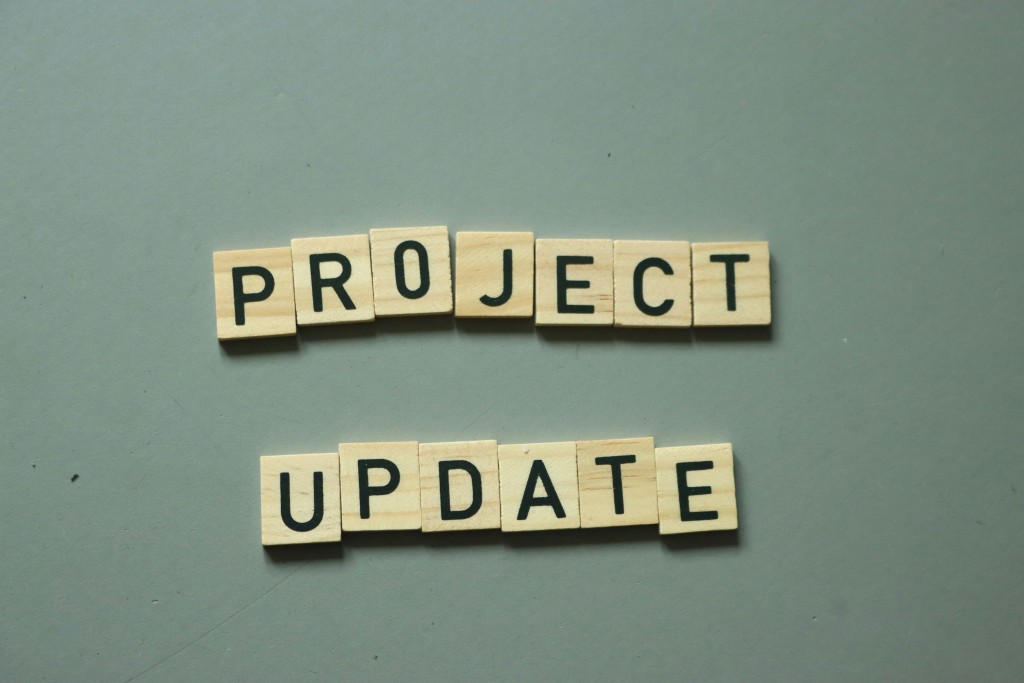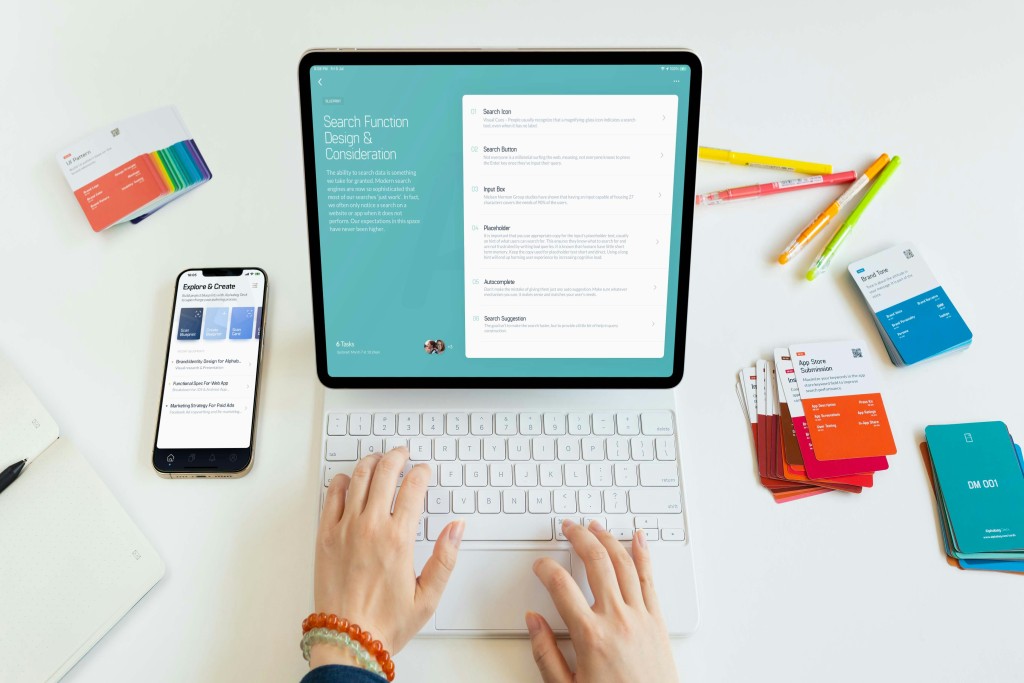Table of Contents
ToggleThe Foundations of Hybrid Project Management

Introduction: Why Hybrid is the New Default
Remember the great project management debate? Agile vs. Waterfall. It felt like you had to pick a side. But the landscape has evolved. The most successful teams aren’t choosing one; they’re blending the best of both worlds. Welcome to the era of hybrid, the new default for delivering real value in a complex world.
The Reality of the Modern Project Landscape
Today’s projects are a mix of predictable tasks and unpredictable challenges. Strict Agile methodology alone might struggle with long-term vision, while pure Waterfall can be too rigid for changing client needs. The reality is that you need structure and flexibility. This is where hybrid thinking shines, pulling from various frameworks to create a custom-fit approach.
Beyond the Methodology Wars: It’s About Value, Not Dogma
The goal was never to perfectly implement Scrum or earn a PMP certification. The goal is to deliver results. Dogma creates blind spots. Whether you’re using a Gantt chart for high-level planning or a Kanban board for daily task management, the best method is the one that works for your project and your team. It’s about being effective, not just orthodox.
Who This Guide Is For
This is for the doers: the project managers, Scrum Masters, and team leads tired of forcing square pegs into round holes. If you’re looking to move beyond theory and build a practical system that incorporates smart risk management and the right project management software, you’re in the right place.
How to Use This
Consider this your playbook. We’re breaking down the hybrid approach into actionable steps. Use these chapters to assess your current process, identify gaps, and intentionally craft a strategy that boosts productivity and delivers what truly matters: value.
Defining the Hybrid Approach
So, you’ve heard hybrid is the way to go. But what does that actually mean? Let’s cut through the buzzword and define a practical approach that works.

What Hybrid Project Management Is (And What It Isn’t)
Hybrid isn’t just doing Scrum with a Gantt chart in the background. And it’s definitely not chaos. It’s an intentional blend. It is using predictive methods for what’s known (like budgets and fixed deadlines) and Agile methodology for what’s unknown (like feature discovery). It’s about choosing the right tool from the box, whether that’s a Kanban board for daily task management or a detailed risk management plan.
The Spectrum of Methods: From Pure Predictive to Pure Agile
Think of project approaches as a spectrum. On one end, pure predictive (think traditional PMP certification principles). On the other, pure Agile (like a Scrum Master facilitating sprints). Hybrid lives comfortably in the vibrant middle, borrowing structure from one and adaptability from the other to create a balanced project planning strategy.
Core Principles of a Successful Hybrid Model
A successful hybrid model rests on three pillars: flexibility, clarity, and pragmatism. It uses project management software to provide visibility for everyone, not just the team in the daily stand-up. It values outcomes over strict adherence to a single framework. The core principle is simple: be guided by the project’s needs, not by textbook rules.
Common Myths and Misconceptions
Let’s debunk a big one: Hybrid isn’t a free-for-all. It requires more discipline, not less. Another myth? That it’s only for large projects. In reality, its flexibility makes it perfect for projects of any size that have a mix of predictable and unpredictable elements. It’s the smart, modern way to get things done.
The Business Case for Going Hybrid
Adopting a hybrid approach isn’t just a trend; it’s a strategic move that directly impacts your bottom line. It’s the key to unlocking both innovation and stability, giving you a competitive edge in a market that demands both.
Bridging the Gap Between Flexibility and Predictability
The eternal struggle: executives want predictable deadlines and budgets, while teams need the flexibility of an Agile methodology to adapt to changes. Hybrid is the bridge. It allows for high-level project planning with a Gantt chart for stakeholders, while empowering teams with Kanban or Scrum boards for daily task management. This balance is no longer a nice-to-have; it’s a business imperative.
Solving Real-World Pain Points: Compliance, Budgeting, and Speed
How does this work in practice? Hybrid directly addresses common headaches:
- Compliance & Budgeting: Leverage the structured documentation principles from PMP certification to meet audit and financial tracking needs without stifling creativity.
- Speed & Adaptability: Utilize iterative cycles, guided by a Scrum Master, to accelerate feedback loops and get products to market faster, all while maintaining robust risk management.
The right project management software becomes the engine that makes this integrated approach possible, providing a single source of truth for both predictive and adaptive elements.
Case Study Snapshot: Industry Examples of Hybrid Success
Consider a fintech startup. They used a hybrid model to great effect: a predictive framework for strict regulatory compliance and budgeting, combined with Scrum teams for rapid feature development. This wasn’t a compromise; it was the reason they launched a compliant, user-friendly product months ahead of schedule. They didn’t choose a side in the methodology wars; they chose to win.
Building Your Hybrid Framework

Tailoring Your Approach: A Practical Guide
Convinced that hybrid is the answer, but unsure how to build your own model? This is where theory meets the road. Let’s design a framework that fits your unique context, not someone else’s textbook.
How to Choose the Right Elements from Each Methodology
Think of yourself as a chef, not a short-order cook. You’re selecting the finest ingredients from different cuisines. From predictive (PMP certification principles), you might take thorough risk management and initial scope definition. From Agile methodology, you borrow Scrum’s daily stand-ups for transparency or Kanban’s flow for ongoing maintenance work. The key is intentional selection, not random mixing.
Factors to Consider: Project Type, Team, and Stakeholders
Your recipe depends on your ingredients. Ask yourself:
- Project Type: Is it a fixed-price contract with penalties? Lean predictive. A new, innovative product? Lean Agile.
- Team Culture: Is your team self-organizing or do they need more structure?
- Stakeholders: Do they demand fixed deadlines (Gantt charts are your friend) or are they comfortable with evolving priorities?
Your answers will guide which elements to emphasize in your project planning.
The Hybrid Design Canvas: A Tool for Framework Design
Instead of guessing, use a structured tool. Imagine a one-page canvas that helps you map out your approach. In one quadrant, you define your predictive elements: key milestones and budget tracking. In another, you outline your adaptive cycles: sprint lengths and task management tools. This canvas becomes your blueprint, ensuring your blend of project management software and human roles like the Scrum Master all work in harmony toward a single goal: delivery.
Popular Hybrid Patterns in Action
You don’t have to build your hybrid approach from scratch. Several proven patterns have emerged, offering a fantastic starting point. Let’s explore how these frameworks successfully blend the best of both worlds.
Agile-Stage-Gate®: Integrating Sprints with Phase-Gate Reviews
Ideal for large-scale product development, this model marries the iterative power of Agile methodology with the governance of traditional phase-gates. Teams work in Scrum sprints to develop and test features, but their progress is evaluated at predefined “gate” reviews. This provides the flexibility for teams to adapt while giving stakeholders the predictability and risk management controls they need, using project management software to track both the sprint backlog and gate criteria.
Wagile: Combining Waterfall Planning with Agile Execution
A common and practical starting point, Wagile uses a predictive approach for upfront project planning—defining scope, budget, and a high-level Gantt chart—then shifts to Agile teams for execution. This is perfect for projects with fixed deadlines and requirements but where the execution path needs flexibility. The Scrum Master facilitates the adaptive work, while the overall plan maintains the structure often required by those with a PMP certification mindset.
Scrumban: Merging Scrum Structure with Kanban Flow
For teams that love Scrum’s rituals but need more flexibility than fixed sprints allow, Scrumban is the answer. It maintains the roles (like the Scrum Master) and ceremonies (like daily stand-ups) but replaces the sprint backlog with a Kanban board for continuous flow. This enhances task management for support teams or projects with frequent, shifting priorities, reducing bottlenecks and improving delivery speed without losing all of Scrum’s helpful structure.
The Hybrid Project in Motion

Initiating and Planning a Hybrid Project
The start of a hybrid project can feel like a dance, gracefully moving between structure and adaptability. It’s about setting a clear direction while building in the flexibility to navigate unexpected turns. Getting this balance right from the start is what sets successful hybrid projects apart.
Defining High-Level Requirements and a Roadmap (Predictive)
First, tap into your predictive toolkit. This isn’t about detailing every last feature, but about establishing the non-negotiables: core business objectives, key deliverables, budget, and fixed deadlines. Think of it as drawing the map. A high-level Gantt chart outlines major phases and milestones, providing the stability stakeholders and your PMP certification instincts crave. This phase is crucial for risk management, identifying major hurdles early on.
Creating a Release Plan and Prioritizing a Backlog (Agile)
Next, shift to your Agile mindset. How will you actually travel the path on that map? Break the roadmap into releasable increments. This is where you create a prioritized backlog—a dynamic list of features ordered by value. The Scrum Master and team collaborate to estimate this work, often using Scrum or Kanban frameworks for the execution cycle. This backlog becomes your engine for task management, guiding the team’s day-to-day work within the guardrails of the overall plan.
Developing a Hybrid Project Charter
The final step is weaving these threads into a single, cohesive document: the Hybrid Project Charter. This isn’t a traditional, rigid charter. It’s a living document that clearly states the predictive elements (the “why” and the “what”) and sanctions the adaptive approach (the “how”). It aligns everyone, from executives to team members, and is your north star, ensuring your project management software is configured to support both the big picture and the iterative details.
Executing, Monitoring, and Adapting
This is where your hybrid plan proves its worth. Execution isn’t about blindly following a script; it’s about actively steering the project, using both fixed markers and real-time feedback to navigate toward success. It’s the dynamic balance of doing, checking, and adjusting.
Running Sprints and Iterations
The engine of your adaptive work is the iteration. Whether you’re using strict Scrum sprints or a continuous Kanban flow, this rhythm is vital. The Scrum Master facilitates these cycles, ensuring the team focuses on delivering value from the prioritized backlog. Daily stand-ups keep task management sharp and transparent, allowing the team to self-organize and address blockers immediately, maintaining the agility at the heart of Agile methodology.
Tracking Progress with Hybrid Metrics (e.g., Burnup Charts vs. Earned Value)
How do you measure success when you have one foot in each world? You use a blended set of metrics. For stakeholders who think in terms of PMP certification principles, Earned Value Management (EVM) shows progress against the baseline budget and schedule. For the team, a Burnup Chart is far more effective, showing work completed against the total scope, which can gracefully accommodate change. The right project management software will help you visualize both in one place.
Conducting Hybrid Meetings: Sprint Reviews with Steering Committees
Communication is the glue. Hold your Scrum sprint review to demonstrate a working product to users and gather feedback. Then, synthesize that information for a steering committee meeting. Here, you can overlay the iterative progress onto the high-level Gantt chart, discussing how adaptations impact the overall roadmap and risk management profile. This bridges the gap, ensuring everyone is informed and aligned, from the team room to the boardroom.
Closing and Governing the Hybrid Project
The final phase of a hybrid project is where its true strength shines. It’s not just about delivering the last feature; it’s a structured yet flexible process that ensures value is realized, stakeholders are satisfied, and lessons are captured for the future. A hybrid closeout is both a conclusion and a critical launchpad for what comes next.
Obtaining Feedback and Managing Final Deliverables
Closing a hybrid project draws from both worlds. Use the adaptive, iterative mindset of Agile methodology to gather final user feedback, ensuring the delivered product truly meets evolving needs. Simultaneously, employ predictive practices, familiar to those with PMP certification, for the formal acceptance of deliverables, final budget reconciliation, and contract closure. Your project management software is vital here, providing the audit trail that satisfies both approaches.
The Role of the PMO in a Hybrid Environment
The Project Management Office (PMO) evolves from a process enforcer to a value enablement center. In a hybrid environment, the PMO doesn’t mandate a single methodology. Instead, it provides the tools, templates (like adaptable Gantt charts and Kanban boards), and coaching needed for teams to tailor their approach. It supports the Scrum Master and project managers alike, fostering a culture where the right blend for risk management and task management is championed.
Measuring Success and Capturing Lessons Learned
Success is measured in dual terms. Did we meet the baseline predictive goals of scope, time, and cost? And did we achieve the adaptive goals of customer satisfaction and delivered value? The retrospective, a cornerstone of Scrum, is expanded. The team and stakeholders collaborate to capture lessons on the hybrid process itself: What blend of project planning techniques worked? What didn’t? This creates a virtuous cycle, continuously refining your organization’s unique recipe for success.
The Human Element: Leading Hybrid Teams

The Hybrid Project Manager Profile
The shift to hybrid project management demands a new kind of leader. It’s less about enforcing a single methodology and more about being a versatile conductor, orchestrating a symphony of approaches to deliver outstanding results. The hybrid project manager is the key to making the entire system work.
Essential Skills: Facilitator, Influencer, and Adaptable Leader
Forget the old image of a taskmaster tracking a Gantt chart. Today’s hybrid pro is a facilitator who guides teams through complexity. They are influencers who can articulate the value of a Kanban flow to a traditional stakeholder and justify predictive risk management to an Agile team. Their core skill is adaptability, seamlessly shifting between the structured mindset of PMP certification and the flexible principles of Agile methodology.
Moving from Project Manager to Project Coach
This role is a fundamental evolution from manager to coach. Instead of assigning tasks, you empower. You coach your team on Scrum events and task management principles, fostering self-organization. You might not be the Scrum Master, but you champion the role and ensure the team has the support it needs to thrive. Your focus is on enabling success, not just monitoring it.
Managing Stakeholder Expectations Across the Spectrum
Your communication superpower is translation. You bridge the gap between the predictable language of milestones and budgets that executives understand and the adaptive language of sprints and backlogs that development teams use. You leverage project management software to create dashboards that speak to both audiences, ensuring everyone is aligned on progress, even when their definitions of “done” initially differ. You are the unifying force that builds trust across the spectrum.
Building and Sustaining a Hybrid Culture
A hybrid model isn’t just a process change; it’s a cultural shift. Its success hinges on moving beyond “us vs. them” mentalities and building an environment where different approaches are respected and integrated. The right culture turns your hybrid framework from a diagram on a wall into a living, breathing system that delivers.
Fostering Collaboration Between Agile and Predictive Teams
Break down the silos. This means creating shared goals that both your predictive planners, with their PMP certification expertise, and your Scrum teams can rally behind. Use your project management software to create visibility for everyone; let the predictive side see the progress on the Kanban board, and let the Agile teams understand the constraints on the Gantt chart. Facilitate joint risk management sessions where both perspectives are valued in identifying and mitigating project threats.
Overcoming Resistance to Change
Resistance often comes from a place of fear or misunderstanding. Address it with transparency and education. Show traditional managers how Agile methodology provides better task management and faster value delivery, not less control. Demonstrate to Agile purists how upfront project planning can actually reduce obstacles and create a more stable environment for creativity. Celebrate small wins from the new approach to build momentum and prove its value.
Creating Psychological Safety for Experimentation
This is the bedrock of a thriving hybrid culture. Teams must feel safe to say, “This part of our blend isn’t working; let’s try something else.” Leaders and Scrum Masters must champion this. Empower your teams to experiment with their workflow—perhaps adjusting the length of a planning cycle or how they integrate their Scrum stand-ups with a broader reporting tool. When a experiment fails, focus on the lesson learned, not the blame. This safety to adapt is what makes a hybrid culture truly sustainable.
Tools, Templates, and The Future

Enabling Hybrid with Technology
A hybrid mindset needs a technological backbone. The right project management software isn’t just a nice-to-have; it’s the essential engine that connects your predictive and adaptive worlds, making a complex blend manageable, transparent, and effective.
Overview of Tools that Support Hybrid Work
Modern platforms have evolved far beyond simple Gantt chart makers or digital Kanban boards. Solutions like Jira Align or MS Project Online are built for this very purpose. They allow you to define high-level strategic goals and milestones (satisfying the PMP certification need for structure) while simultaneously empowering teams to work in Scrum sprints or continuous flow models. This creates a single source of truth, from the executive roadmap down to the developer’s daily task management.
Automating Reporting and Dashboards for Different Audiences
The true power of these tools lies in automation. Instead of the Scrum Master and project manager manually compiling reports, the software does it for you. You can create tailored dashboards: a high-level view for stakeholders showing progress against the master plan and risk management indicators, and a team-level view tracking sprint velocity and backlog health. This automates the translation of Agile methodology progress into predictive terms, ensuring everyone gets the information they need in a format they understand, without the manual overhead.
The Future of Hybrid Project Management
The shift to hybrid isn’t a final destination; it’s the foundation for the next evolution of how we work. The future belongs to organizations that can master this flexibility, leveraging new technologies and work models to stay relentlessly adaptive. The principles of hybrid are the key to navigating what comes next.
The Impact of AI and Machine Learning on Hybrid Practices
Imagine a world where your project management software doesn’t just track work but predicts it. AI will revolutionize hybrid practices by analyzing historical data to forecast risks with stunning accuracy, suggesting optimal resource allocation, and even automating routine task management. For the Scrum Master, AI could identify team burnout patterns. For those with a PMP certification, it could provide predictive insights that make risk management more proactive than ever before.
Hybrid in a Remote-First World
The rise of distributed teams has made hybrid approaches not just beneficial, but essential. Hybrid’s blend of structure and autonomy is perfectly suited for remote work. Tools that support Kanban and Gantt charts become the virtual office wall, providing clarity and alignment across time zones. The disciplined project planning and communication rhythms of Agile methodology prevent remote teams from drifting apart, ensuring that flexibility doesn’t turn into fragmentation.
Continuous Evolution: Staying Adaptive as a Practice
The core lesson of hybrid is that change is the only constant. The most successful teams will be those that institutionalize learning. They will continuously refine their blend of practices, regularly asking what elements from Scrum, predictive planning, or new tools are serving them best. This isn’t about finding one perfect formula; it’s about building a culture and practice that is inherently adaptive, ensuring your methods never become obsolete.
Conclusion
By strategically implementing these powerful [Project Management] strategies, you can reclaim valuable hours each week. Remember, effective [Project Management] isn’t about working harder—it’s about working smarter, enabling you and your team to focus on what truly drives success.
More Tips
- Implement these Project Management tips and claim your time back.
- Start saving 10 hours a week. Master your Project Management today.
- Ready to save time? Put these Project Management tips to work.
- Download your free Project Management efficiency guide now.

